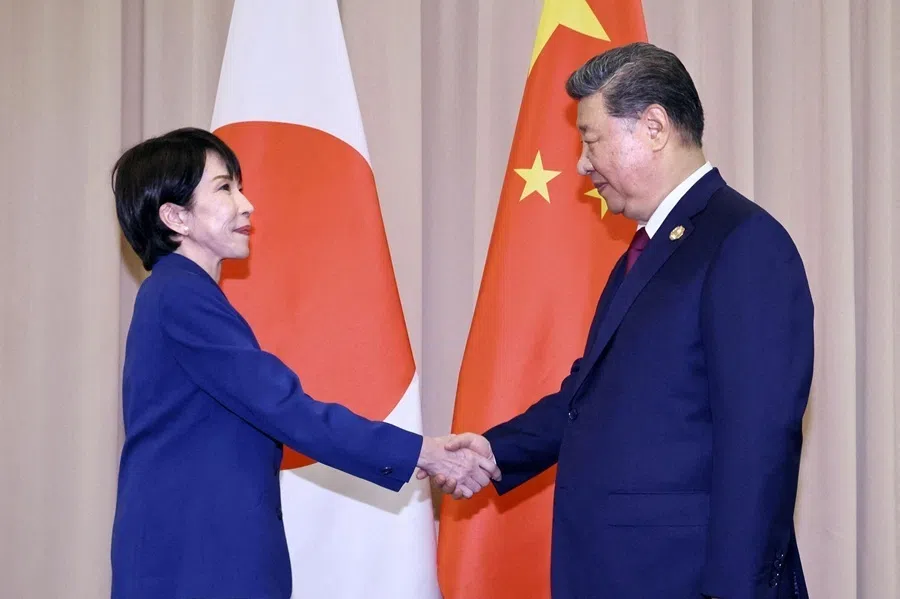[Big read] Can older workers solve Taiwan's labour shortage problem?
Given Taiwan's low birth rate and ageing population, the labour shortage has become a severe issue, especially in the hospitality industry. While the government seems to be keen to open up to migrant workers, this might mean larger issues down the road. So why not open up the opportunities for Taiwan's middle-aged and elderly? Lianhe Zaobao journalist Chuang Hui Liang speaks with academics and industry insiders to find out more.
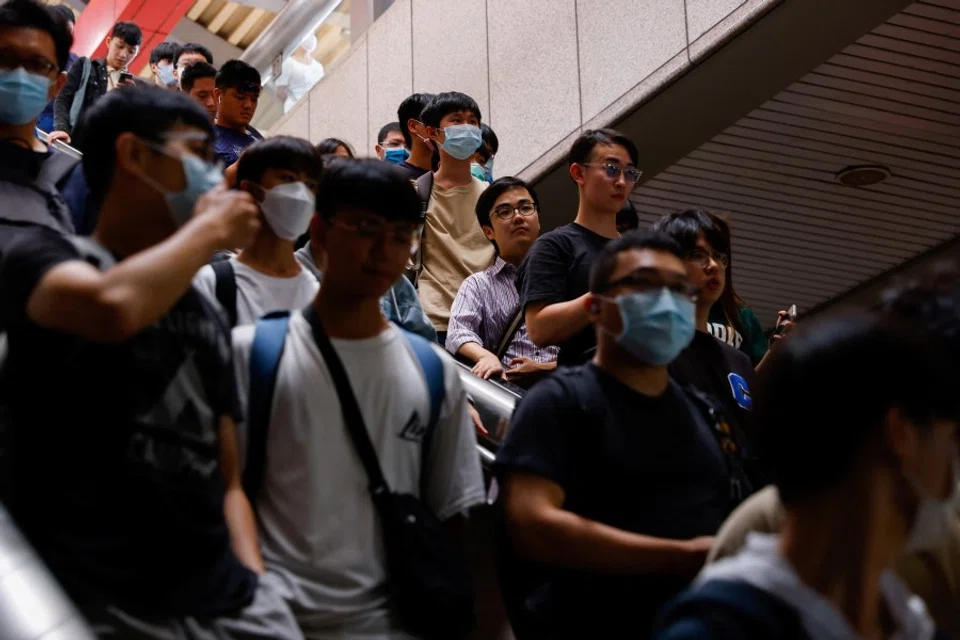
Following the pandemic, Taiwan has welcomed a surge in revenge consumption. However, due to a labour shortage, customers are complaining about how hard it is to book a table or room at some popular restaurants and hotels that have downsized their operations.
No workers
"The problem now is that bookings are at capacity, but no one is available to work," said Steven Pan, chair of Regent Hotel Group, during a shareholders' meeting in June. He said that the group's Silks Place Hotel in Taroko is only taking guests up to 70% of its room capacity, making it one of the most difficult hotels to book in Taiwan, "because we don't have enough people to serve or clean the rooms".
Taiwan's transport and labour ministries have implemented programmes such as salary subsidies for hiring new housekeeping and cleaning staff, but this has not worked out as expected. Even hospitality providers that have raised room prices to increase wages are not coping.
According to the Tourism Administration of the Ministry of Transportation and Communications, the hospitality industry is estimated to have a labour shortage of about 8,000 people, of which 5,500 are in housekeeping and cleaning roles, and the remainder in front-of-house and front-desk positions.
... the hospitality industry is clinging to old practices and seeks to solve its problems with cheap foreign labour. - Professor Lee Chien-hung, Department of Labor and Human Resources, Chinese Culture University
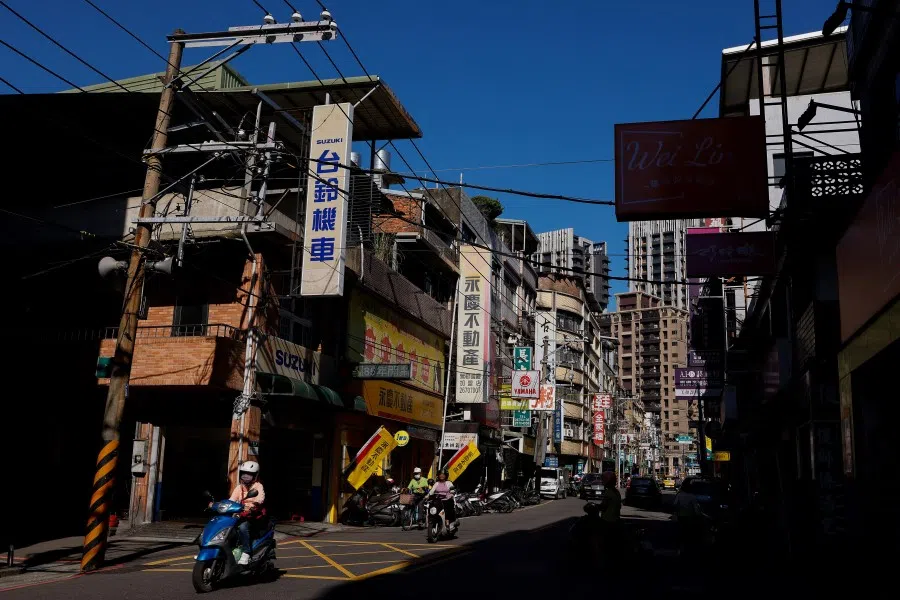
In late October, the Tourism Administration submitted a report to the Ministry of Labor recommending opening up Taiwan's hospitality industry to 3,000 migrant workers.
Hospitality industry clinging to old practices
The Taiwan Confederation of Trade Unions strongly opposed this move, criticising it as a solution that does more harm than good. It said that Taiwan's service industry offers poor terms and little leave, adding that employers should increase wages, improve working conditions, and make jobs more flexible, while creating a conducive workplace for middle-aged, elderly and female employees. Bringing in migrant workers will only undermine the chances of local workers getting better pay and working conditions, and contribute to low wages in Taiwan.
Minister of Labor Hsu Ming-chun reiterated that the government prioritises employment for Taiwanese workers, and they will review the Tourism Administration's report in December and conduct impact assessments on gender, ethnicity and other factors in the meantime.
Professor Lee Chien-hung from the Department of Labor and Human Resources at the Chinese Culture University told Lianhe Zaobao that wages are low and turnover rates are high for Taiwan's service industries, including hospitality. This unhealthy structure worsened during the pandemic, when many businesses in these industries ruthlessly laid off employees.
He said that after the pandemic situation improved in October last year, some restaurant chains introduced measures such as raising basic wages by 10% to 15% and offering profit-sharing options to attract talent, but these efforts were still unable to retain them. Even the construction industry, which suffered a severe labour shortage, significantly increased wages to attract workers. In contrast, the hospitality industry is clinging to old practices and seeks to solve its problems with cheap foreign labour.
"If it [the use of foreign labour] spreads from housekeeping to other jobs, opening up to foreign labour will be unstoppable, like quicksilver seeping through." - Professor Cheng Chi-yu, Graduate Institute of Labor Research, National Chengchi University
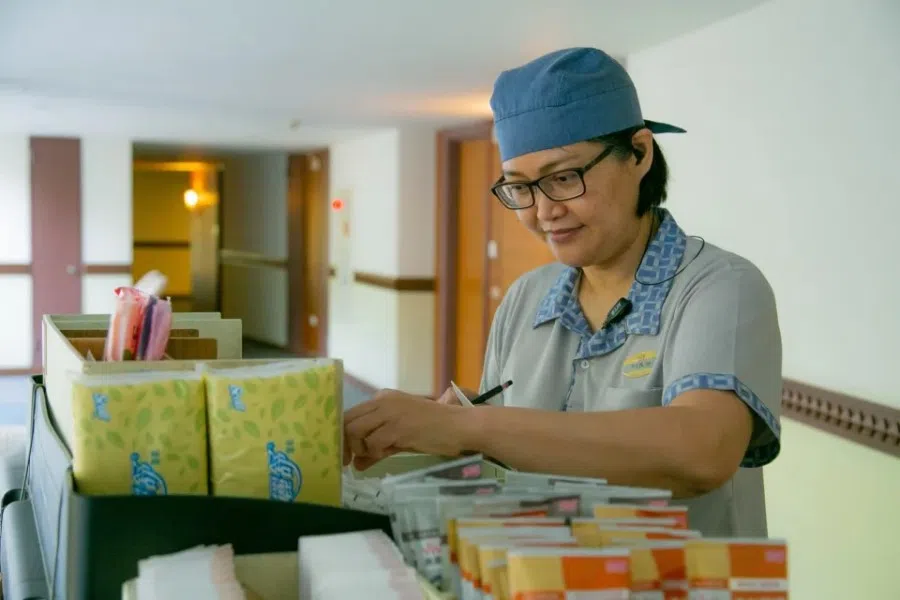
Cheng Chi-yu, a professor at the National Chengchi University's Graduate Institute of Labor Research, emphasised that the call for opening up to foreign labour has never stopped, and if the hospitality industry can do it, other industries will follow suit. He said, "If it spreads from housekeeping to other jobs, opening up to foreign labour will be unstoppable, like quicksilver seeping through."
No more demographic dividend
Taiwan's declining birthrate has long been a national security issue. According to statistics from the Ministry of the Interior, Taiwan saw a record low of 138,986 births in 2022. Official data also show that the number of university students aged 18 to 21 fell below one million in 2022, and it is estimated that there will be only 777,000 university students by 2028. This suggests that there may not be enough new blood entering the workforce in the future, and labour shortages will most likely remain a long-term trend in Taiwan.
Also, Taiwan will become a super-aged society by 2025 - for every five people, there will be one elderly person aged 65 or older. Official data also show that the population of young adults aged 15 to 64 reached its peak of 74.22% in 2012 and has been declining ever since. In 2016, the birth rate and death rate intersected, marking the entry into an era of more deaths than births.
Shelly Wu, general manager of 104 Middle-aged and Elderly Job Bank, told Lianhe Zaobao that the above-mentioned numbers indicate that "the seeds of labour shortages were planted ten years ago, and the problem has still not been properly addressed".
"The world is changing and enterprises can no longer use the demographic dividend habits of the past for organisational management. It's time to wake up!" - Shelly Wu, General Manager, 104 Middle-aged and Elderly Job Bank
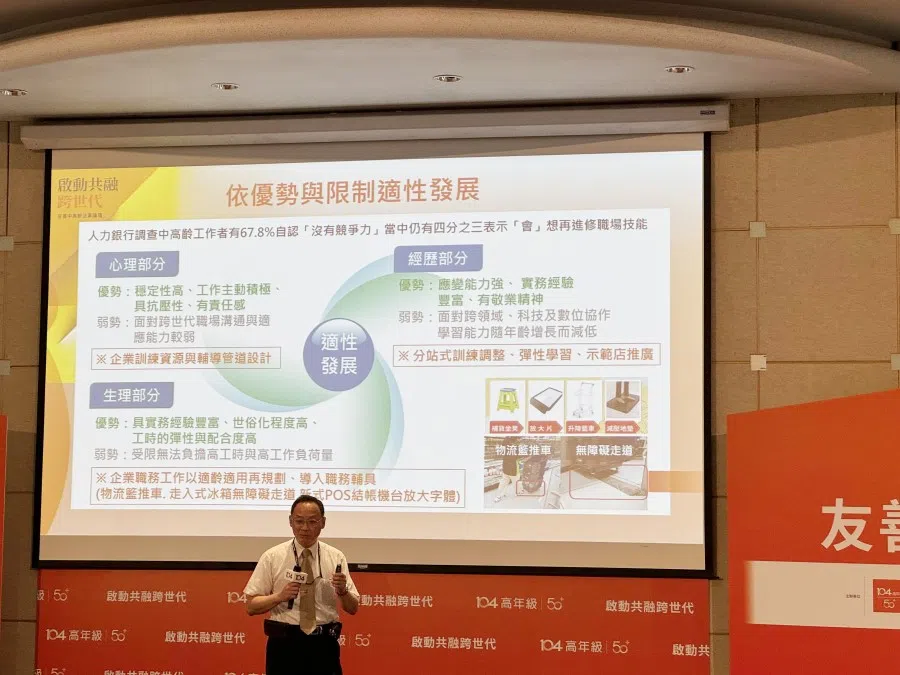
According to 104's report on middle-aged and elderly employment trends, the population of middle-aged and elderly people aged 45 to 64 in 2023 is nearly 7.13 million, and is expected to rise to nearly 7.22 million people by 2030. Meanwhile, the population of young adults aged 25 to 44 has been declining annually, dropping from 6.74 million to 5.82 million.
Wu said, "There is no more cheap labour, only pricier recruitment costs. In the past, people looked for jobs, but after 2012, jobs began looking for people. The world is changing and enterprises can no longer use the demographic dividend habits of the past for organisational management. It's time to wake up!"
The report also showed that the proportion of enterprises welcoming middle-aged and elderly jobseekers increased slightly from 11.4% in 2020 to 18.5% in 2023.
Among them, accommodation and catering, as well as wholesale and retail - the sectors with the highest recruitment demand - ranked fourth and tenth place respectively in terms of "middle-aged and elderly recruiter friendliness", suggesting much room for improvement.
".... If enterprises find it difficult to overcome the mental barrier of hiring middle-aged and elderly Taiwanese workers, do you think they can tolerate and manage a diverse and inclusive workforce that include migrant workers?" - Wu

Middle-aged and elderly jobseekers aged 55 and above are more concerned with the workplace environment and want to be treated with respect and empathy.
Managing a diverse and inclusive workforce
Wu said that enterprises have a stereotypical image of elderly employees and believe that they would take advantage of their seniority, have poor physical strength and learning skills, and cannot keep up with digital technology. Thus, 104 helps employers recruit older jobseekers who could break these stereotypes, hoping to encourage middle-aged and elderly workers to return to the workplace and solve labour shortages.
As for the Taiwan government's plan to hire more migrant workers, Wu noted, "Cultural and language barriers, as well as lifestyle differences, pose great challenges when it comes to migrant workers. If enterprises find it difficult to overcome the mental barrier of hiring middle-aged and elderly Taiwanese workers, do you think they can tolerate and manage a diverse and inclusive workforce that include migrant workers?"
According to statistics from the National Immigration Agency of Taiwan's Ministry of the Interior, as of the end of August, there were about 740,000 migrant workers in Taiwan, and those who are unaccounted for have increased from 30,000-40,000 to over 80,000 in the past decade.
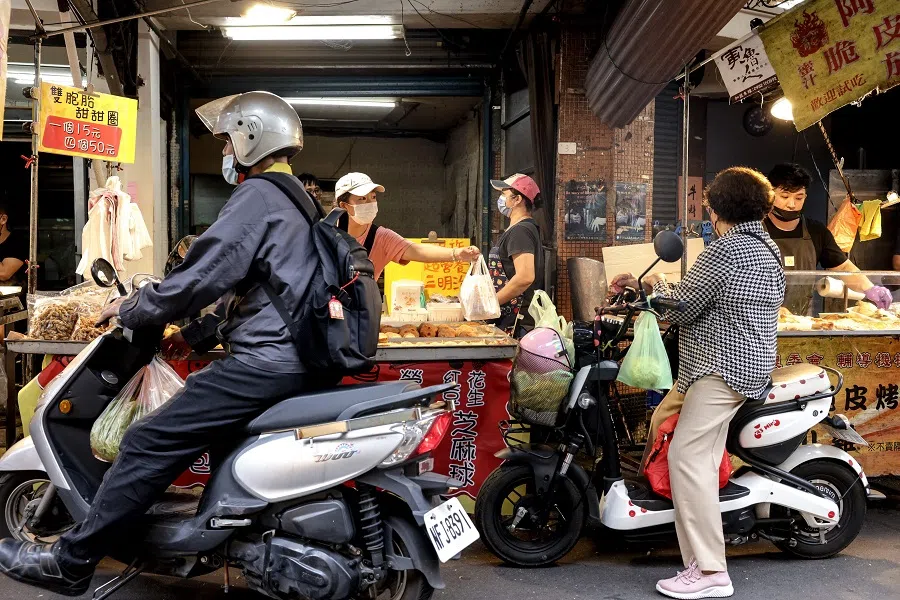
National Chengchi University's Cheng reminded, "Whether migrant workers should be given equal pay for equal work is the last piece of the puzzle in Taiwan's migrant labour policy. The crucial issue now is the labour shortage, which has changed the hiring of migrant workers from a buyer's market to a seller's market. Due to transnational movements, those with good language abilities are also headed to Japan and South Korea."
He said migrant workers are also sharing information online while being lured by illegal labour brokers. "Employers shouldn't always expect cheap labour to be an option, and it is wrong for the government to think of using migrant workers to solve the labour shortage," he added.
Official statistics show that in 2021, the labour force participation rate for people aged 65 and older was 25.6% in Japan, 36.3% in South Korea, and only 9.2% in Taiwan.
Voluntary redundancy
Amid labour shortages in the service industry, Formosa Plastics Group subsidiary Nan Ya Plastics is pushing for a voluntary redundancy programme among its senior staff.
Nan Ya Plastics chair Wu Chia-chau confirmed that, affected by the poor economy and China-US tech war, the company recorded a small loss and encouraged staff to take voluntary redundancy to improve company operations. But employees at Nan Ya Plastics are worried if the company will still consider retrenching its staff.
Following the easing of the pandemic in October last year, tech exports and traditional manufacturing, which have performed well over the past three years, have instead entered a cycle of decline, with pay cuts for supervisor-level employees and voluntary redundancy programmes occasionally making the news.
Cheng told Lianhe Zaobao that Taiwanese enterprises have a stereotypical image of older workers and finds it hard to communicate with them. When the economy was bad, they first offered voluntary redundancy to employees aged 50 to 60.
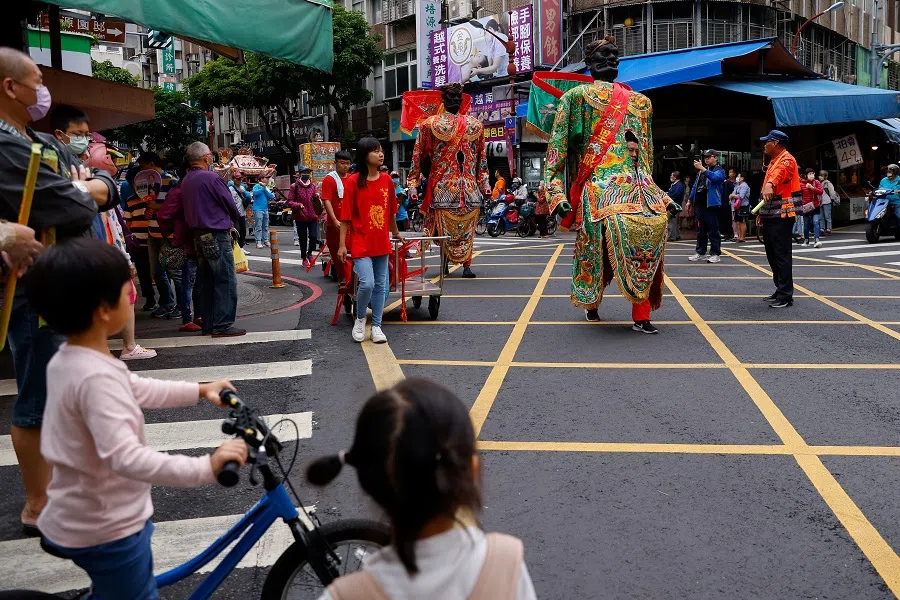
He said, "Putting aside age, has the company evaluated if the elderly staff made a positive impact on operations? This is a strange phenomenon. There's already a lack of youths to hire, and they may not even be that good of an employee anyway. But the company would rather let go of the more experienced and senior staff first."
... most females in Singapore, Europe and the US work till the age of 60, while most females aged 35 to 45 in Japan and South Korea would return to the labour market. However, the rate of Taiwanese females returning to the workforce is low. - Cheng
Far behind neighbouring and Nordic countries
While Taiwan's labour force participation rate for those aged 55 and below is similar to that of other countries, the rate of those aged 55 to 59 falls far behind. Official statistics show that in 2021, the labour force participation rate for people aged 65 and older was 25.6% in Japan, 36.3% in South Korea, and only 9.2% in Taiwan.
Further analysing the reasons for the rapid decline in Taiwan's labour force participation rate for those aged 55 to 59 in terms of age and gender, Cheng said that while the proportion of male workers aged 15 to 24 is similar to that of female workers in Taiwan, the number of males in the 25 to 44 age bracket is ten percentage points higher than females, and over 20 percentage points higher than females in the 45 to 64 age bracket. This shows that females often withdraw from the labour force after they get married to take care of their family and aged parents.
Cheng pointed out that most females in Singapore, Europe and the US work till the age of 60, while most females aged 35 to 45 in Japan and South Korea would return to the labour market. However, the rate of Taiwanese females returning to the workforce is low. He pointed out that the government and businesses should encourage females over the age of 30 who had left the workforce to return to the labour market, instead of turning to hiring more migrant workers.

Chinese Culture University's Lee cited the example of neighbouring South Korea, which faces even more pressure than Taiwan when it comes to the issue of employees near retirement age.
Lee said that more than a decade ago, South Korea took a leaf out of the books of Nordic countries such as Sweden and Denmark, adopting a phased retirement plan whereby businesses would let older employees work part-time. The government would also offer subsidies and allow these workers to withdraw part of their retirement funds before the age of 65, so that their pay would not be lower than if they were working full time.
However, Lee pointed out that Nordic countries have implemented laws 30 years ago to safeguard the rights of part-time and dispatched workers, while the labour insurance in Taiwan is tied to one's salary. Once middle-aged and elderly employees switch to part-time work, their labour insurance coverage would be reduced accordingly, despite the fact that they are prone to illnesses and accidents as their health declines. "The system must be designed with a comprehensive and complementary programme," he suggested.
Hotel Royal: Setting the stage for elderly workers
After the pandemic, many hotels in Taiwan have found that labour shortage has become an even more severe issue than the pandemic itself.
Yen Jui-hsien, human resources associate at the Hotel Royal Group, told Lianhe Zaobao that the company had recognised the labour shortage problem during the pandemic, which was then relatively under control in Taiwan. Since then, its hotels across Taiwan have been encouraged to employ middle-aged and elderly workers, and certain roles are even broken down to better utilise the strengths of these workers. Currently, 30% of hotel employees are middle-aged and elderly workers.
These sprightly retirees would usually work for three to four hours on a work day, and are easier to manage than migrant workers because of cultural similarities. - Yen Jui-hsien, Human Resources Associate, Hotel Royal Group
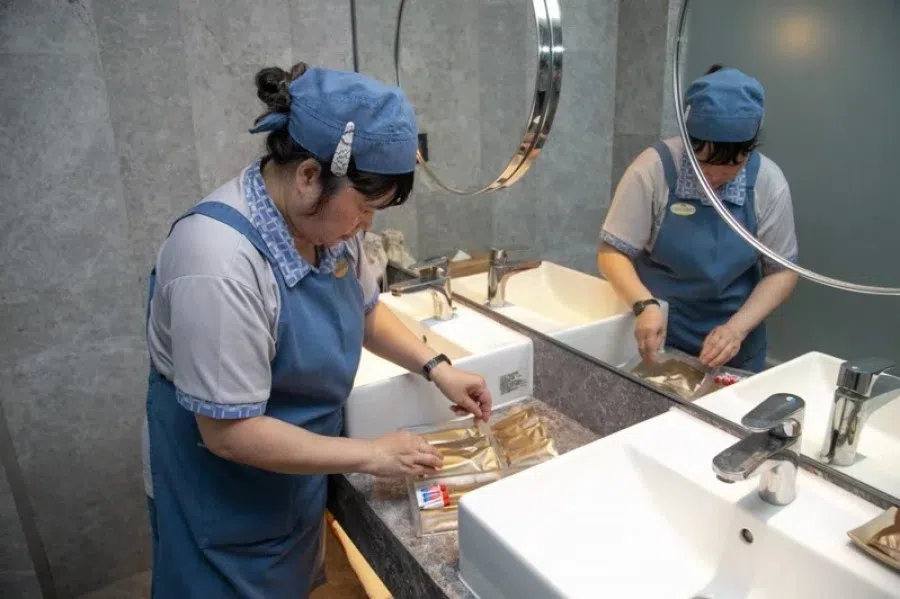
She explained, "In the past, a single employee might be in charge of the entire workflow, but now we have each employee specialising in a particular role, in accordance with their physical fitness. The working hours are also more flexible. We noticed that efficiency has improved as a result."
Yen pointed out that the company hopes to prioritise Taiwanese workers and create a friendly working environment to set the stage for workers in their golden years. "They take care of the more repetitive and basic tasks in the company and are workers whom we cannot do without," she said.
She stressed that middle-aged and elderly workers have their strengths. These sprightly retirees would usually work for three to four hours on a work day, and are easier to manage than migrant workers because of cultural similarities.
Embarking on a second spring at Muji
Master's degree holder Wang Yu-hua, 59, previously worked at a well-known Japanese clothing supply business as head of their design and research and development department. In 2021, during the pandemic, she was informed by the company that if she continued working, she would be relegated to a lower position with a reduced salary. She chose instead to receive an additional six months' worth of salary as part of her voluntary redundancy.

The once self-assured Wang believed that she would be able to find another job easily, but her confidence took a beating when she did not get any replies after submitting resumes to several jobs.
Wang turned towards food and beverage education, earning a certificate after attending a 300-hour coffee course. However, she lamented, "I was still no match for a whippersnapper. Even coffee chains did not want me because of my age."
She became disheartened, saying, "It was at this moment that I realised this society values age over expertise."
In March this year, she successfully applied for a job at Muji via 104's "Curated 50+", a platform for jobseekers over the age of 50, embarking on a new phase in life.
Wang told Lianhe Zaobao, "I want to continue to learn and not disconnect from society. Despite having my own set of expertise, I need to start from scratch and not reject a retail role because of my previous managerial mindset."
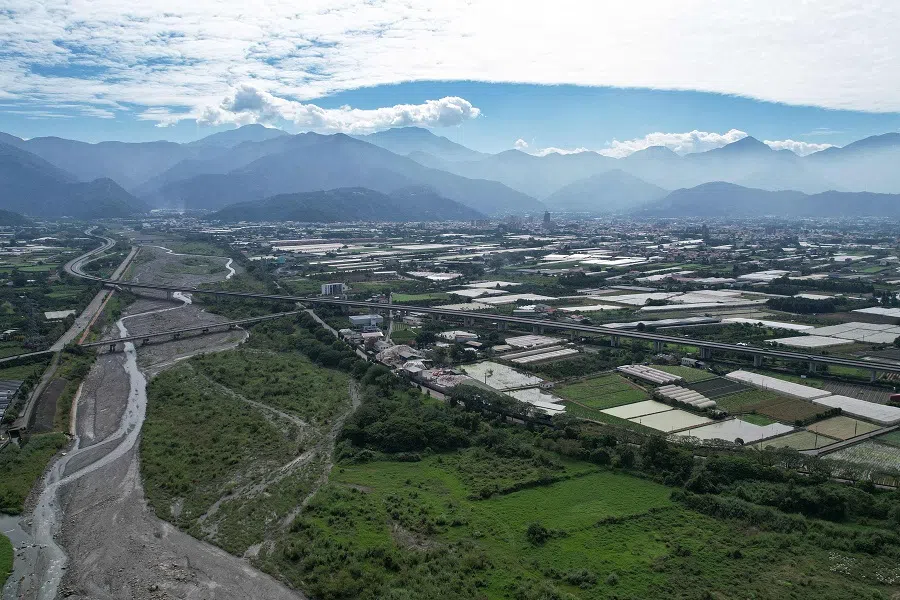
In her current role, Wang looks forward to helping customers find the right product. Wang once offered her service to an elderly lady who was looking for clothing for her family members. Wang felt a sense of achievement when the elderly lady happily spent more than NT$10,000 (US$310) in the store.
"I certainly hope to continue learning and to put my newly acquired knowledge to good use," Wang said.
This article was first published in Lianhe Zaobao as "台湾大缺工之问:要开放外劳还是善用中老龄员工?".





